The Last House on the Left is not only one of my favorite horror films, but one of my favorite films of all time. I have seen the film countless times and it always commands my complete attention. But this movie’s reputation through the years has divided the horror film community. For every person who thinks it’s the pinnacle of grindhouse cinema, there’s another person who thinks it’s a cheap exploitation movie with bad acting and horrible music. I’ve never been a fan of a movie that was as equally loved and hated at the same time. In fact, some of the people who love the movie still kind of hate it. So I figured it was long overdue that I wrote about Wes Craven’s Last House on the Left.
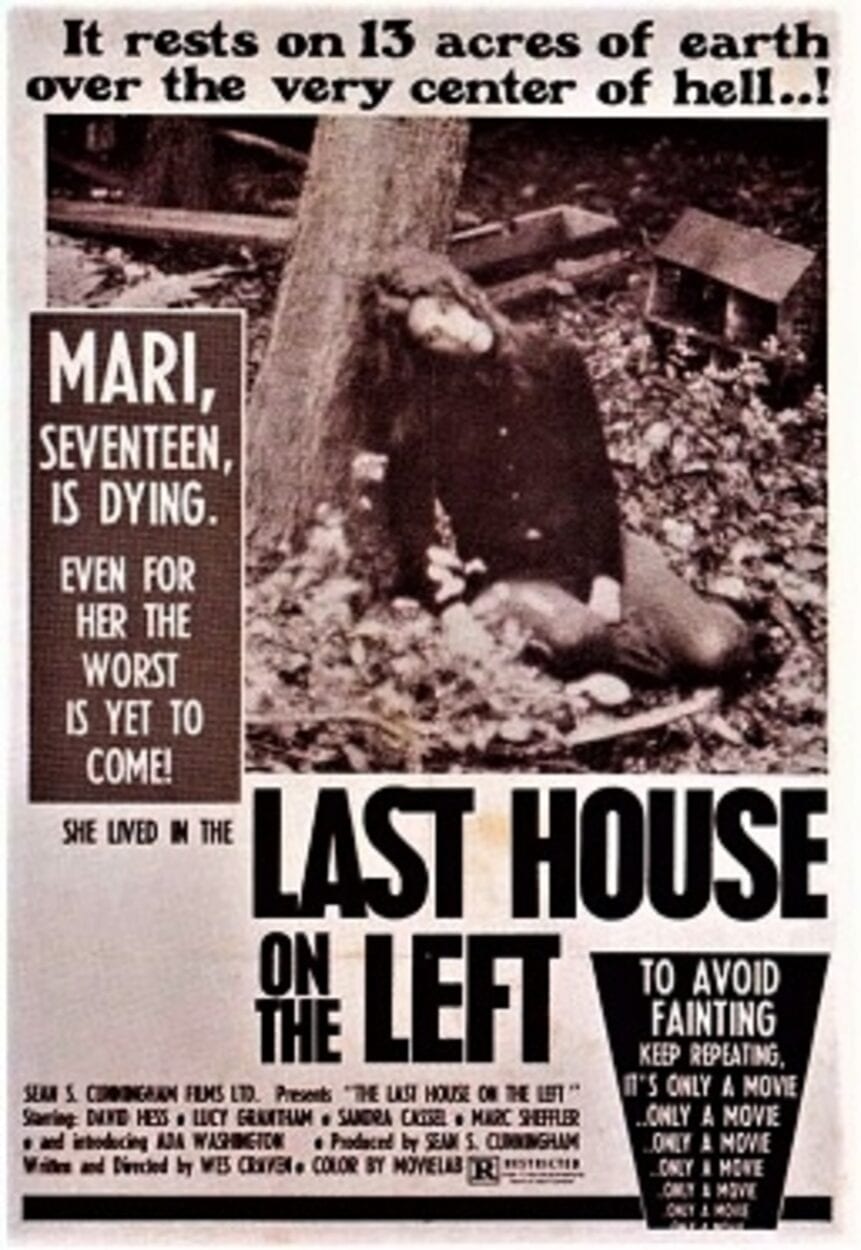 My introduction to the movie happened back in the early ’90s at Video Systems, the local video store (to anyone under the age of 20, the thought of going out to a shop in a strip mall to rent movies must seem archaic). I was a huge horror fan as a kid, with only one problem—my parents were extremely old-fashioned and strict and didn’t want me watching violent, gory horror movies. When I was in grade school, I was allowed to watch Halloween and Friday the 13th but only if they were shown on broadcast television. The movies ended up being heavily edited for TV to the point where I missed out on all the “good stuff”: the cursing, the naked breasts, and the blood.
My introduction to the movie happened back in the early ’90s at Video Systems, the local video store (to anyone under the age of 20, the thought of going out to a shop in a strip mall to rent movies must seem archaic). I was a huge horror fan as a kid, with only one problem—my parents were extremely old-fashioned and strict and didn’t want me watching violent, gory horror movies. When I was in grade school, I was allowed to watch Halloween and Friday the 13th but only if they were shown on broadcast television. The movies ended up being heavily edited for TV to the point where I missed out on all the “good stuff”: the cursing, the naked breasts, and the blood.
As I entered junior high school, my parents got a little more permissive and would let me rent videos that were a bit more adult in nature but I still never got to see anything too “hardcore.” Sitting on a shelf in the horror movie section of Video Systems was the empty VHS case for a movie that looked absolutely disgusting and terrifying and I was immediately transfixed. That movie was Last House on the Left, and I HAD to see it. There was even a warning on the front cover that the film was banned in the U.K.! This has to be an amazing movie if a whole country actually banned it, right? Every weekend when my mom would take me to the video store (renting movies was solely a weekend activity back in those days), I would stand there and read the back of the case until I had memorized it. But every week, the answer was always “No, Justin, pick something else.” Last House on the Left became a legend in my mind, and my inability to actually watch the movie only increased its stature in my adolescent brain.
Then, during the summer when I was 16 years old, I acquired some independence (finally!!!) and would occasionally go to the video store with my best friend, Ted, sans parents. Ted was a couple of years younger than me but his mother was much more permissive than my mom. His mother allowed him to rent any movie he wanted and better yet, the clerk at the counter knew this. So when he and I walked into Video Systems with a free pass to rent any film we wanted, I made a beeline to the copy of Last House that I’d been fantasizing about for the last few years. It didn’t take much to get Ted as excited as I was to see the movie, and we didn’t have to confer for long before we made our way up to the counter, clutching the VHS case. It was really going to happen! I was finally going to get to see this banned horror classic!
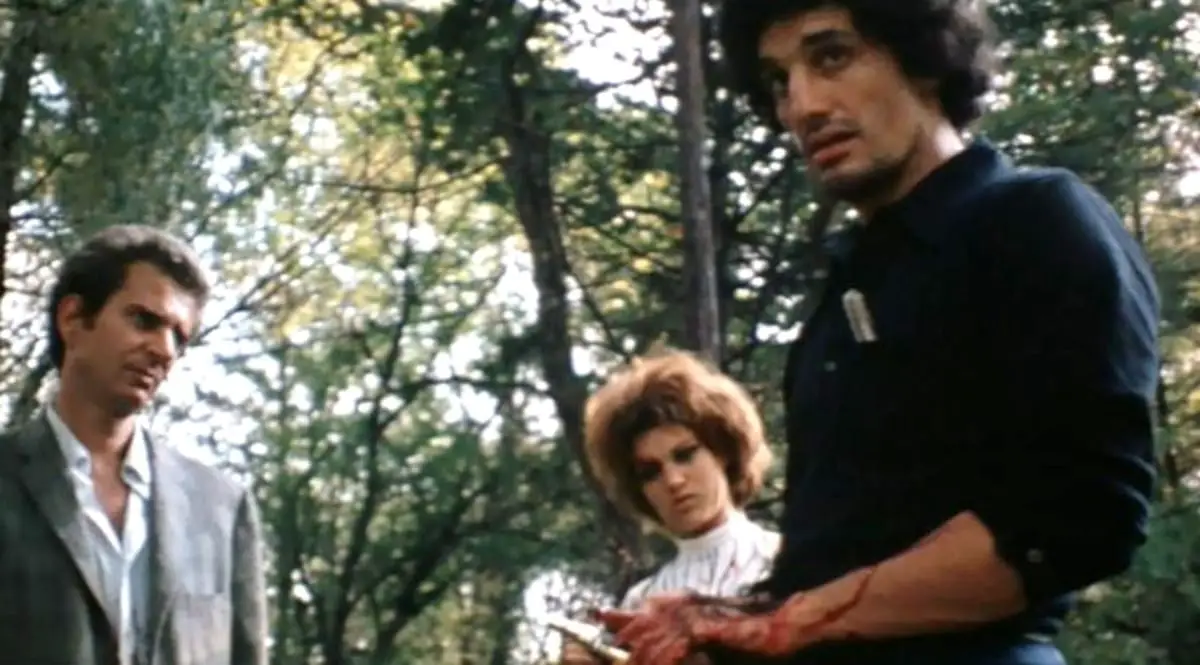 I still remember that humid summer day when we sat in his house and watched the film. We were not disappointed. Last House has everything a teenage boy could want in an exploitation horror movie—badass villains, blood, and guts (literal guts in this case, as there is a brief scene of a girl being disemboweled), a soundtrack that was incredibly creepy, and of course…female nudity, the pinnacle of any decent horror flick when you’re a teenager. In addition, the movie gave us thrills that we didn’t even know we wanted (like the ending where Mrs. Collingwood bites off the penis of one of the antagonists…how often do you get to see that in a film, or anywhere for that matter?). After the movie ended, I convinced Ted to let me take the video home so I could watch it again late at night while my parents were asleep before returning it the next day.
I still remember that humid summer day when we sat in his house and watched the film. We were not disappointed. Last House has everything a teenage boy could want in an exploitation horror movie—badass villains, blood, and guts (literal guts in this case, as there is a brief scene of a girl being disemboweled), a soundtrack that was incredibly creepy, and of course…female nudity, the pinnacle of any decent horror flick when you’re a teenager. In addition, the movie gave us thrills that we didn’t even know we wanted (like the ending where Mrs. Collingwood bites off the penis of one of the antagonists…how often do you get to see that in a film, or anywhere for that matter?). After the movie ended, I convinced Ted to let me take the video home so I could watch it again late at night while my parents were asleep before returning it the next day.
Back in those days, most movies were prohibitively expensive to own. So over the next few years, I’d rent Last House every so often and tell all of my friends how it was the ultimate horror movie. Occasionally I’d show the movie to others and this is when I realized that most people didn’t share my views about the film’s brilliance. Some of the complaints I heard were, “It looks like they had a budget of about twelve dollars,” “Oh my god, the actors playing the parents are so bad. Are they trying to be serious?” “Are these scenes with the bumbling cops supposed to be funny?,” and of course “What’s with these terrible folk songs they keep playing? And wait, is he actually singing about the characters in the movie? This isn’t scary, it’s just stupid.”
 To my surprise and dismay, no one else I ever watched Last House with seemed to enjoy it (with the exception of Ted, my original viewing partner). In fact, a few people even asked me halfway through the movie if we could stop watching it because it was that bad. Why did everyone dislike a movie that I felt was one of the best, most visceral films ever made? Many years later, I had an intelligent discussion about the film with my brother-in-law and it opened my eyes as to what I saw in the movie that others missed, and that’s what I’m going to expand upon in this article.
To my surprise and dismay, no one else I ever watched Last House with seemed to enjoy it (with the exception of Ted, my original viewing partner). In fact, a few people even asked me halfway through the movie if we could stop watching it because it was that bad. Why did everyone dislike a movie that I felt was one of the best, most visceral films ever made? Many years later, I had an intelligent discussion about the film with my brother-in-law and it opened my eyes as to what I saw in the movie that others missed, and that’s what I’m going to expand upon in this article.
 First things first, the basics: Last House on the Left was written and directed by Wes Craven, making his directorial debut after a few years spent primarily as a writer and film editor. The story is loosely based on Ingmar Bergman’s 1960 film, The Virgin Spring, about a father in medieval Sweden who exacts revenge against a group of herdsmen who raped and murdered his daughter. In Last House, the first half of the movie centers on teenagers, Mari Collingwood and Phyllis Stone, as their attempt to buy marijuana before a rock concert goes horribly wrong leading to their capture by a murderous group of felons. The girls are tortured, raped, and murdered in the woods by the midpoint of the movie. The second half of the film follows the killers as their car breaks down and, by an amazing coincidence, they seek refuge in the house of Mari’s parents. Before long, the parents discover that their overnight guests are responsible for their daughter’s murder and plot revenge.
First things first, the basics: Last House on the Left was written and directed by Wes Craven, making his directorial debut after a few years spent primarily as a writer and film editor. The story is loosely based on Ingmar Bergman’s 1960 film, The Virgin Spring, about a father in medieval Sweden who exacts revenge against a group of herdsmen who raped and murdered his daughter. In Last House, the first half of the movie centers on teenagers, Mari Collingwood and Phyllis Stone, as their attempt to buy marijuana before a rock concert goes horribly wrong leading to their capture by a murderous group of felons. The girls are tortured, raped, and murdered in the woods by the midpoint of the movie. The second half of the film follows the killers as their car breaks down and, by an amazing coincidence, they seek refuge in the house of Mari’s parents. Before long, the parents discover that their overnight guests are responsible for their daughter’s murder and plot revenge.
The movie had a budget of $90,000 (about half a million today, adjusted for inflation). The consensus among critics at the time was that the film was just an ugly, violent exploitation movie, although Roger Ebert praised the film for its dramatic tension and scenes of unflinching terror. Modern reviews of the film usually give it high praise, with a few caveats. It’s not exactly what I would call an “enjoyable” movie in the same way that slashers like the Friday the 13th movies can be fun to watch. Rather than watching a hockey-masked killer stalk and kill a bunch of dumb teenagers, we are watching true evil. The violence that occurs in Last House (well at least during the first half) is a horror that is very real, something that happens in the world every day. Unlike Jason Voorhees, people like Krug and his gang really do exist, and this makes a good portion of the film very harrowing to watch.
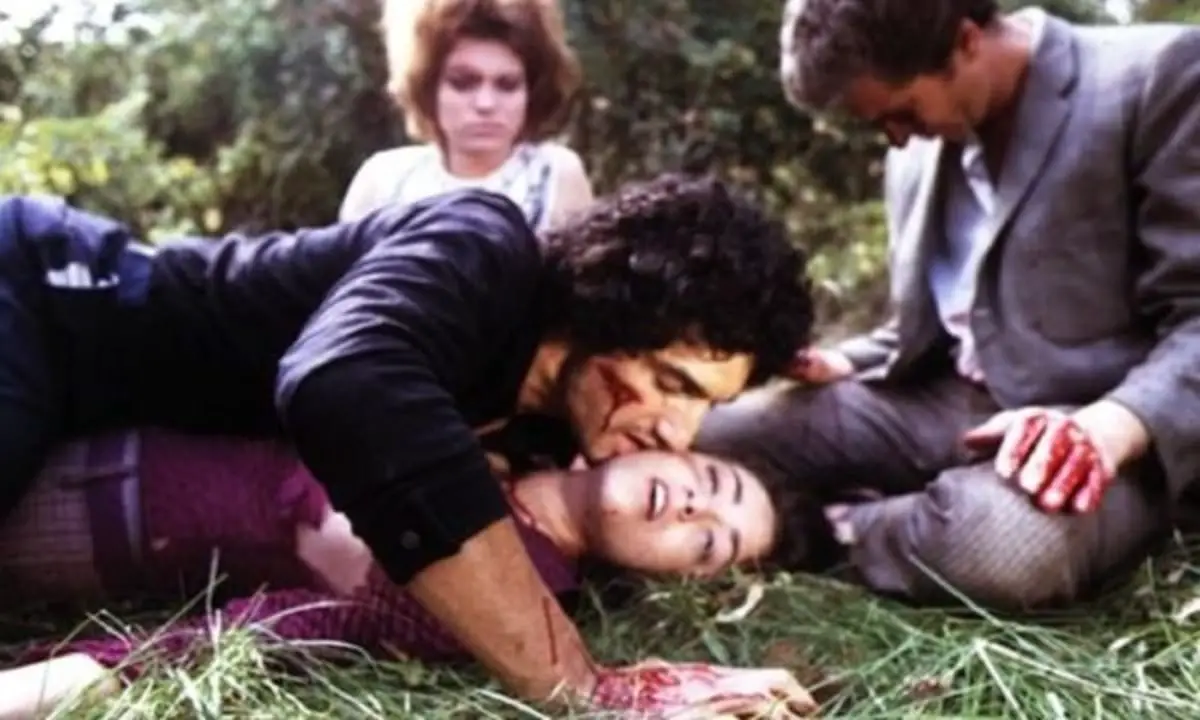 My experience with Last House is that it is a film unlike any other. It’s a grim little low-budget horror flick but it also exists in its own peculiar world. Yes, the actors playing Mari’s parents are not particularly…expressive (to put it nicely). The soundtrack is comprised of some very dated and semi-derivative folk and country songs. And the slapstick scenes involving the bumbling cops seem wildly out of place when they’re being intercut with scenes of abject terror. Last House on the Left is a film where one minute we’re watching possibly the ugliest, most inhuman rape scene in movie history and the next minute we are watching a balding, overweight cop fall off a chicken truck and slamming his hat on the ground in frustration. We cut from the girls being forced to undress at knifepoint to Mari’s parents baking a cake while a goofy, jaunty tune plays in the background.
My experience with Last House is that it is a film unlike any other. It’s a grim little low-budget horror flick but it also exists in its own peculiar world. Yes, the actors playing Mari’s parents are not particularly…expressive (to put it nicely). The soundtrack is comprised of some very dated and semi-derivative folk and country songs. And the slapstick scenes involving the bumbling cops seem wildly out of place when they’re being intercut with scenes of abject terror. Last House on the Left is a film where one minute we’re watching possibly the ugliest, most inhuman rape scene in movie history and the next minute we are watching a balding, overweight cop fall off a chicken truck and slamming his hat on the ground in frustration. We cut from the girls being forced to undress at knifepoint to Mari’s parents baking a cake while a goofy, jaunty tune plays in the background.
 The actors playing the vicious felons (David Hess, Fred Lincoln, Jeramie Rain, and Marc Sheffler) are as naturalistic as they come. They give amazing performances, especially considering their limited acting experience. In fact, Fred Lincoln, who played the knife-wielding Weasel, acted almost entirely in adult movies aside from this role. David Hess in particular gives a performance deserving of an Academy Award. His portrayal of Krug is menacing and primitively erotic. I can’t imagine another actor better suited for the role. Sandra Peabody and Lucy Grantham, playing the hapless victims, also do an exemplary job in their roles (although I’ve always thought that the look on Mari’s face, while she is watching her friend Phyllis being sexually assaulted in the hotel room, is the same face one would make upon finding moldy lasagna in a Tupperware container in the back of the refrigerator).
The actors playing the vicious felons (David Hess, Fred Lincoln, Jeramie Rain, and Marc Sheffler) are as naturalistic as they come. They give amazing performances, especially considering their limited acting experience. In fact, Fred Lincoln, who played the knife-wielding Weasel, acted almost entirely in adult movies aside from this role. David Hess in particular gives a performance deserving of an Academy Award. His portrayal of Krug is menacing and primitively erotic. I can’t imagine another actor better suited for the role. Sandra Peabody and Lucy Grantham, playing the hapless victims, also do an exemplary job in their roles (although I’ve always thought that the look on Mari’s face, while she is watching her friend Phyllis being sexually assaulted in the hotel room, is the same face one would make upon finding moldy lasagna in a Tupperware container in the back of the refrigerator).
 The second half of the film focuses on Mari’s parents (Gaylord St. James and Cynthia Carr) as they plot their revenge against their daughter’s killers. With all due respect, their acting skills are in line with something you’d expect to see on a soap opera on public access television. They don’t properly convey any of the emotions that are expected of them. When they discover their daughter’s lifeless body in the woods, they can only muster a look of mild concern. They can’t even effectively sell the scene where they’re baking a birthday cake together. When they battle it out with Krug’s gang during the film’s climax, the juxtaposition of acting styles is disorienting.
The second half of the film focuses on Mari’s parents (Gaylord St. James and Cynthia Carr) as they plot their revenge against their daughter’s killers. With all due respect, their acting skills are in line with something you’d expect to see on a soap opera on public access television. They don’t properly convey any of the emotions that are expected of them. When they discover their daughter’s lifeless body in the woods, they can only muster a look of mild concern. They can’t even effectively sell the scene where they’re baking a birthday cake together. When they battle it out with Krug’s gang during the film’s climax, the juxtaposition of acting styles is disorienting.
 This jarring overall disparity in tone seems to be the reason the average viewer doesn’t connect with this movie. It’s widely agreed upon that the scenes of torture and abuse in the woods are some of the most disturbing images ever set to celluloid. But most people can’t seem to appreciate these scenes of terror in the same film as the scenes of the klutzy cops and the cloying folk music and the stilted acting. Even the parents’ revenge plot itself is like something out of a bad MacGuyver episode: Mr. Collingwood sets a bunch of amateur traps in the house, like spreading shaving cream on the floor so the villains slip and fall into the door (that’ll teach ‘em!).
This jarring overall disparity in tone seems to be the reason the average viewer doesn’t connect with this movie. It’s widely agreed upon that the scenes of torture and abuse in the woods are some of the most disturbing images ever set to celluloid. But most people can’t seem to appreciate these scenes of terror in the same film as the scenes of the klutzy cops and the cloying folk music and the stilted acting. Even the parents’ revenge plot itself is like something out of a bad MacGuyver episode: Mr. Collingwood sets a bunch of amateur traps in the house, like spreading shaving cream on the floor so the villains slip and fall into the door (that’ll teach ‘em!).
And of course, there’s the infamous castration scene. Mrs. Collingwood has just found out that the guests in her home are responsible for murdering her young daughter. Yet, somehow she has the presence of mind to seduce one of the killers, and it doesn’t bother her in the least to get on her knees and engage him intimately, just to reach the moment where she inflicts a severe injury on him right before the climax. Her plan is bizarre enough on its own, but couldn’t she have just attacked him when she first got in position? Instead, she chose to engage intimately with him before seeking her revenge? And remember, this is the villain who just killed her only child. There’s almost no way to view these final scenes as anything but a form of gruesome black comedy.
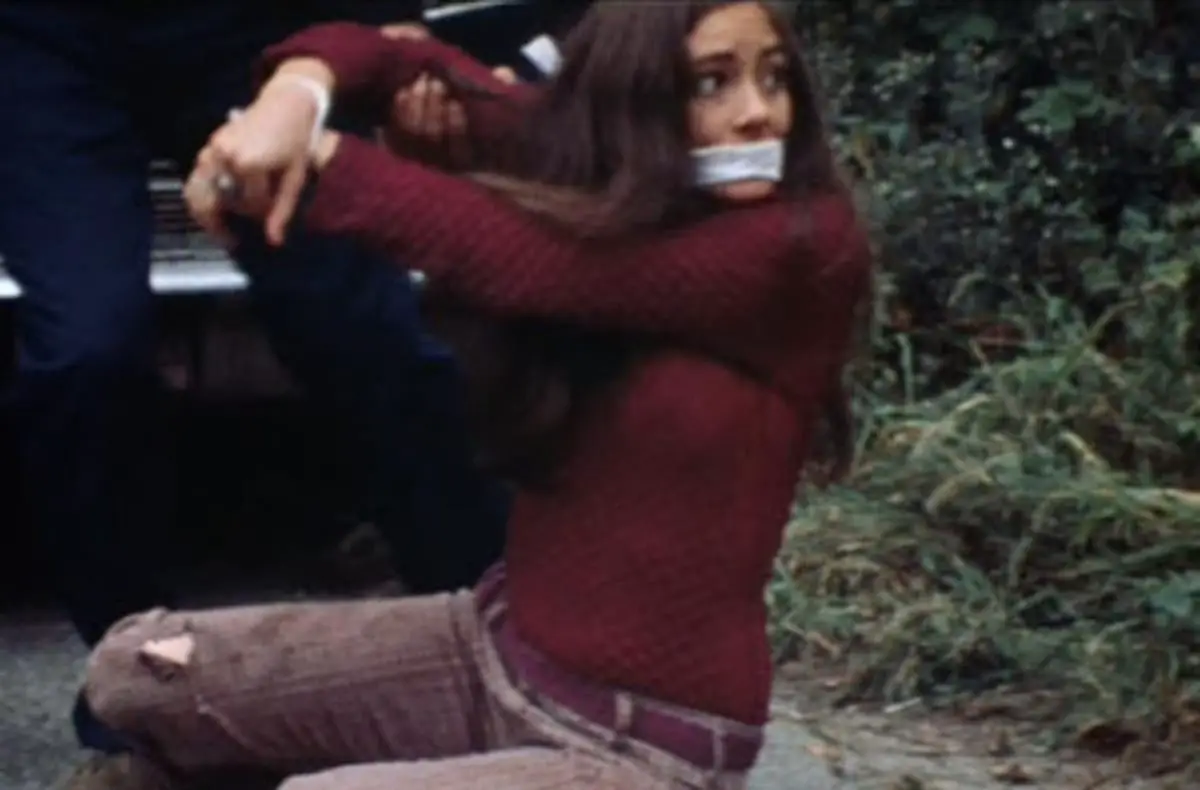 I believe that many viewers come into Last House expecting a gritty 1970s horror flick. Once they are confronted with all of the random goofiness sprinkled throughout, they tend to write off the film as just a bad movie because they don’t know what to make of the whole thing. It’s always been my feeling that all of the problems that people have with the film are exactly the reasons why it is so special. Last House is more than just a horror movie. It’s a beautifully surreal experience that transcends normal filmmaking. It’s almost as if David Lynch tried his hand at grindhouse cinema, working off a script by John Waters. There’s simply nothing out there quite like this movie.
I believe that many viewers come into Last House expecting a gritty 1970s horror flick. Once they are confronted with all of the random goofiness sprinkled throughout, they tend to write off the film as just a bad movie because they don’t know what to make of the whole thing. It’s always been my feeling that all of the problems that people have with the film are exactly the reasons why it is so special. Last House is more than just a horror movie. It’s a beautifully surreal experience that transcends normal filmmaking. It’s almost as if David Lynch tried his hand at grindhouse cinema, working off a script by John Waters. There’s simply nothing out there quite like this movie.
Going back to the discussion I had with my brother-in-law, I tried to explain the virtues of this movie and how I viewed it as a unique piece of art. His rebuttal was that the way I interpreted the film was not what Wes Craven intended. He said that unlike David Lynch’s love of stiff acting to emphasize banality and give scenes a dreamlike quality, the acting in Last House was just the result of incompetent actors and should be seen as such. Along the same lines, he said that while I may view the attempts at comedy as being surreal, they were, in fact, just poorly conceived ideas that didn’t belong in the film. I love the scene where Krug and his gang stuff the girls into the trunk of the car and take them for a joyride while a rollicking country tune plays on the soundtrack…especially the first time I realized that the song lyrics were directly referencing the characters and events of the movie. He just thought it was stupid and it took him out of the grim reality he was looking for in the film.
 This evokes an interesting question about cinema. Should a director’s intent have any bearing on how a viewer experiences a film? There are some people who believe that Tommy Wiseau’s The Room is a bizarre, hilarious work of art. Others just see it as a really bad movie. It obviously wasn’t Tommy Wiseau’s intent to make a surreal comedy (no matter what he tried to convince the public of after the fact), but does it make the film any less genius if that’s what the finished product turned out to be? I truly believe that anything one gets out of a movie is as valid an experience as anyone else’s, regardless of the intent of the filmmakers. That being said, everyone has the right to dislike a piece of art for whatever reason they like. I just truly believe that those who can’t see beyond the intent of a movie are really missing out on some exceptional experiences in life.
This evokes an interesting question about cinema. Should a director’s intent have any bearing on how a viewer experiences a film? There are some people who believe that Tommy Wiseau’s The Room is a bizarre, hilarious work of art. Others just see it as a really bad movie. It obviously wasn’t Tommy Wiseau’s intent to make a surreal comedy (no matter what he tried to convince the public of after the fact), but does it make the film any less genius if that’s what the finished product turned out to be? I truly believe that anything one gets out of a movie is as valid an experience as anyone else’s, regardless of the intent of the filmmakers. That being said, everyone has the right to dislike a piece of art for whatever reason they like. I just truly believe that those who can’t see beyond the intent of a movie are really missing out on some exceptional experiences in life.
Last House on the Left was remade in 2009 but I have yet to see the movie. I’m not a big fan of remakes and no remake could ever capture the spirit of the original. I did hear about a scene with someone putting Krug’s head into a microwave until it explodes, which is crazier and more outlandish than anything that happens in the original film. I suppose this assures that Last House will always be associated with a harsh, wild cinematic experience.
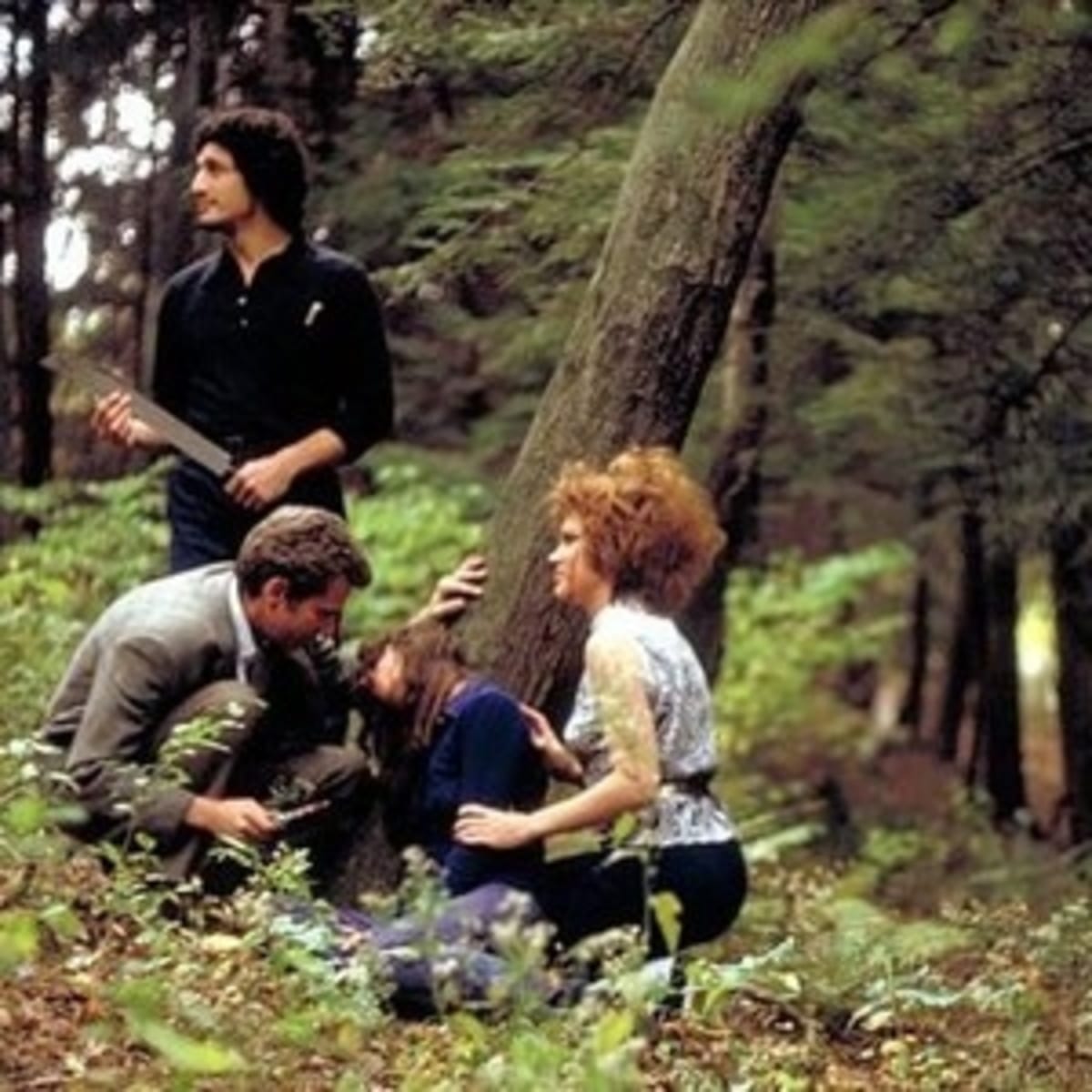 The Last House on the Left is available on MGM DVD and Blu-ray.
The Last House on the Left is available on MGM DVD and Blu-ray.



The original Last House \was much more scary than the remake. Actor Hess cannot be recast. He is very menacing and intense. I saw Last house in 1972 and I have never forgotten any of ot!
I like this review. Very thoughtful.
I like this review. Very thoughtful.